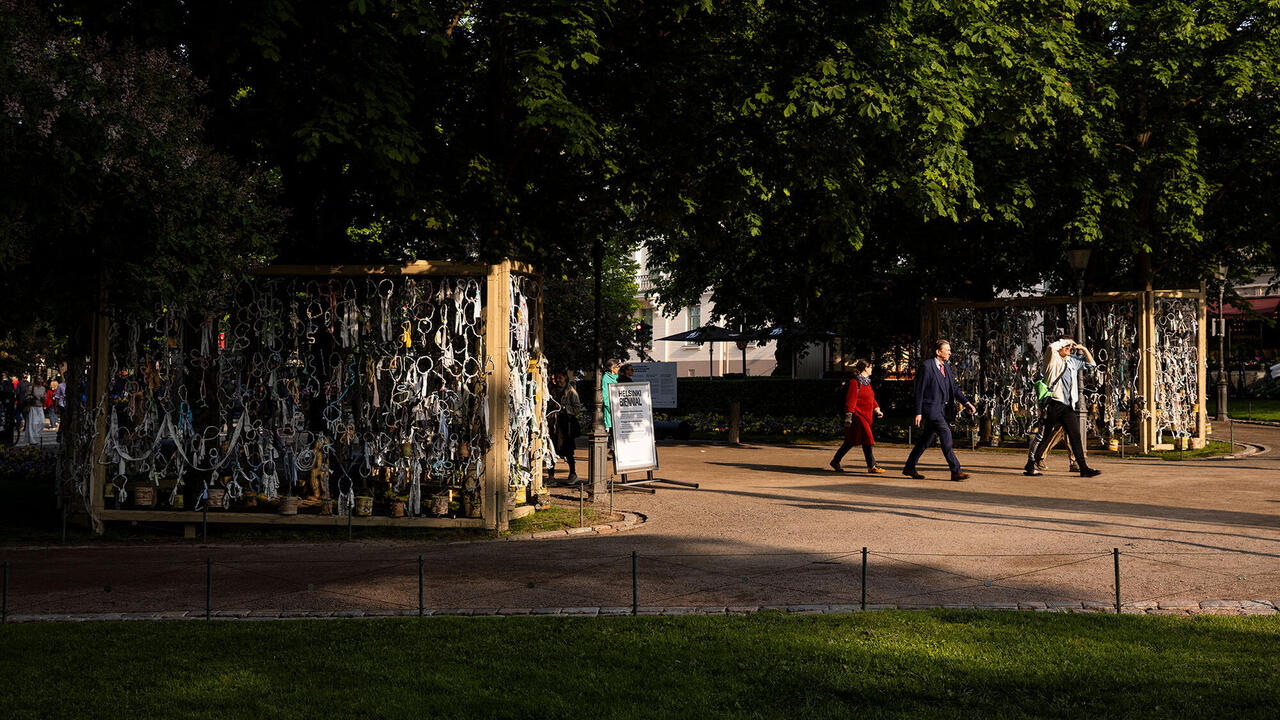Elizabeth Price

Exploring Focal Point Gallery’s new exhibition space, I seek out silver linings with the enthusiasm of a supportive father visiting his daughter’s first student digs. I note sympathetic architectural treatments, its ample natural light, admirable lack of shadow-gap, etc. Ultimately, though, I’m nostalgic for the gallery’s former home, Southend’s infamously ugly Brutalist Civic Centre, which was recently evacuated of both Focal Point and the town’s main library. This feeling seems suitably present in two of the four permanent commissions undertaken by Focal Point to house-warm their new space. Most directly mournful is Mike Nelson’s project, AN INVOCATION: Five Hundred and Thirty Books from Southend Central Library (all works 2013). In the closing weeks of the Civic Centre, Nelson embedded himself in the piles of books being disposed of in the move, selecting titles that had some personal resonance or cultural significance. He then scanned some 530 covers, using them to compile a heavy volume, a sort of illustrated guide to the library’s collection of a specific moment. The actual books were put to one side, and now occupy an original shelving unit permanently sealed inside one of the new gallery’s walls, hidden from view. Only a plaque and an edition of 1,000 artist’s books remain.
With a similar timbre, Tris Vonna-Michell’s Tiles & Tides comprises an elegant reception desk for Focal Point’s new atrium. On top is a collection of memorabilia from ‘Never Never Land’, the hyper-kitsch tourist attraction that intermittently occupied a stretch of Southend’s seafront, and which closed in 2001. Photographs of children staring in terror and delight at crusty, fibreglass nursery-rhyme characters occupy one vitrine, while a toy-town reproduction of the now-empty site sits in the other. Close by are Marc Camille Chaimowicz’s Three-part Screen for Focal Point and Seating for Focal Point, two parts of a three-part commission, which also includes a curtain in the second gallery space. The final commission is Allen Ruppersberg’s ‘Questions and Answers No.1’, a series of DayGlo posters arranged on an overhead hoarding outside. Poetry, catchphrases and confusing slogans are emblazoned across the vibrantly coloured placards: ‘IT’S NOT ART’, ‘WHERE SHOULD I GO?’ and, of course, ‘NOSTALGIA 24 HOURS A DAY’.
Harmless nostalgia aside, the new gallery is an undeniably better exhibition space, and has expanded to include a project space and an education room. It opened with a presentation of new work from Elizabeth Price, comprising a two-channel video, as well as a series of wall-based works in a second space (all titled Sunlight, 2013). Developed during Price’s residency with Dr. Hugh Mortimer, an excellently titled ‘space scientist’ at the Rutherford Appleton Laboratory in Oxfordshire, Sunlight takes as its point of departure thousands of historic slides of the sun, produced at the laboratory between 1875 and 1945. A constantly changing sun holds court at the top of one of the two screens; beneath it, a fast-paced and disjointedly rhythmic narrative unfolds. This comprises motifs from packaging, advertising and fashion, spliced across both planes. A series of negatives from a photo shoot for a luxury brand of hosiery depicts a model posing in ‘sundot tights’. An animated ship sails across the screen shortly after a box of Ship-branded safety matches is presented. Matches, in fact, recur as much as anything – in some instances fresh, in others burnt out, and on occasion in the process of burning. Large hands, black and white but with violently yellow nail varnish applied, clap and click, the snap and slap triggering erratic cuts in the edit (as in Price’s 2012 Turner Prize-winning The Woolworths Choir of 1979). While all of this is going on, disjointed sentences appear a word at a time, by turns in sync, contradictory and totally isolated. These phrases are at first simply informative, explaining that this sun is animated from slides and so forth, but as the piece continues the disembodied typist becomes increasingly insightful. Of the hosiery models, the narrator simply says, ‘These figures willow be our protagonists.’ The text becomes more revealing, culminating in varied and disjointed passages such as: ‘all of these images here / are animated in some loose chronology / albeit with some anachronistic disturbances / to form a whole / a whole and continuous sun.’
These explanations are robotic and yet intimately self-aware. It is this schizophrenia, this oscillation between complete immersion and self-reference, which makes Sunlight so disarming. Instead of lamenting the retro slide technology used to document the sun, or the archive from which the slides are taken, this deeply moving collage instead appears to speak directly from the archive, in the disembodied inflection of history itself.
















